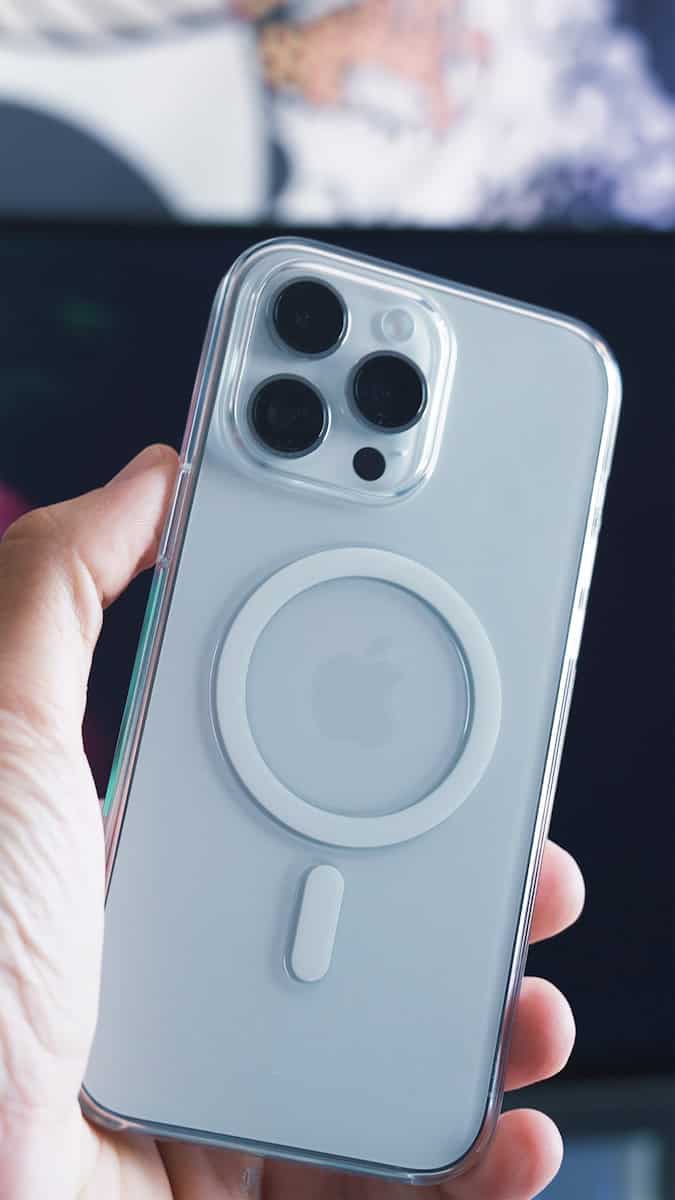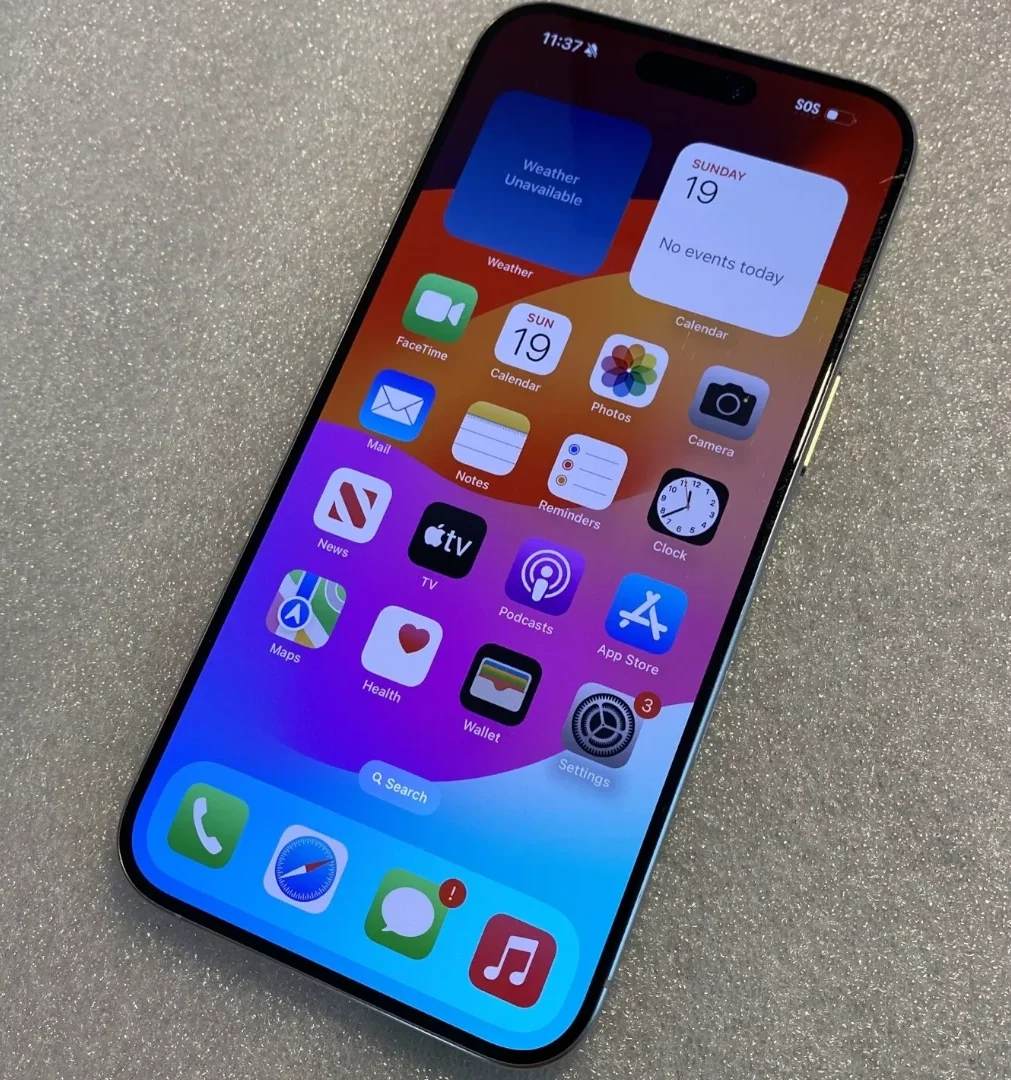With the rumor that the iPhone 16 series might be coming out with new (larger) screens we decided to look at some of the largest iPhone screens that are currently available. Screen size has become a significant factor in user preference – both on the plus and minus side. Some people prefer the biggest screen they can get to maximize viewability, give them a large phone that they can hold in their hands, and for various other reasons (like gaming, watching videos, visual assistance features, etc.) Others might want a smaller screen so the phone fits better in a small hand or pocket and might be more compact, light, and easier to move around.
The largest iPhone screens currently available are on the Pro Max line – iPhone 15 Pro Max, iPhone 14 Pro Max, iPhone 13 Pro Max, and 12 Pro Max. Each boasting a 6.7-inch display. Users often choose these models for an immersive experience that smaller screens can’t provide.
Apple’s Large-Screen iPhones: A Look at the Jumbo Options
Apple has steadily expanded its iPhone lineup to include larger screen sizes, catering to users who crave more immersive visuals for gaming, streaming, and productivity. Here’s a look at some of the biggest iPhone screens available.
The 15 Series Big Screens
As of 2023, the largest iPhones you can buy are the iPhone 15 Pro Max and iPhone 15 Plus, both boasting a 6.7-inch Super Retina XDR display. The Pro Max model features a 120Hz refresh rate for smoother scrolling and animations, while the 15 Plus offers a more budget-friendly option.
| Model | Screen Size (inches) | Resolution (pixels) |
|---|---|---|
| iPhone 15 Pro Max | 6.7 | 2796 x 1290 |
| iPhone 15 Plus | 6.7 | 2796 x 1290 |
Currently Available iPhones with the Largest Screens
These iPhones are currently available from Apple and major retailers:
| Model | Screen Size | Notes |
|---|---|---|
| iPhone 15 Pro Max | 6.7 inches | Top-of-the-line features, including Super Retina XDR display, advanced camera system, and longer battery life. |
| iPhone 15 Plus | 6.7 inches | Offers a larger screen than the standard iPhone 15, with excellent battery life. |
| iPhone 14 Pro Max | 6.7 inches | Still a great option with a stunning display, powerful processor, and excellent cameras. |
| iPhone 14 Plus | 6.7 inches | A more affordable choice for those prioritizing a big display. |

What to Consider When Choosing an iPhone with a Large Screen
- Price: Larger iPhones typically come with a higher price tag, especially the Pro Max models.
- Features: Pro Max models offer the most advanced camera systems, faster processors, and premium features like a 120Hz ProMotion display.
- Battery life: iPhones with larger screens often (but not always) have better battery life due to more space for a larger battery.
- Size and weight: Larger phones may be less comfortable to hold and carry for those with smaller hands.
Older Models to Consider
If you’re open to a slightly older model, these iPhones also offer large screen sizes:
- iPhone 13 Pro Max (6.7 inches)
- iPhone 12 Pro Max (6.7 inches)
- iPhone 11 Pro Max (6.5 inches)
These models can often be found at a discount from retailers or through the refurbished market.
The Recent 6.7″ Screen Options
| iPhone Model | Screen Size (inches) |
|---|---|
| iPhone 15 Pro Max | 6.7″ |
| iPhone 14 Pro Max | 6.7″ |
| iPhone 13 Pro Max | 6.7″ |
| iPhone 12 Pro Max | 6.7″ |
| iPhone 14 Plus | 6.7″ |
| iPhone 15 Plus | 6.7″ |
As you can see, the iPhone 15 Pro Max and the 14 Pro Max currently tie for the biggest screen size at 6.7 inches. All the other models listed here also have a large screen size, so it really depends on your personal preference and needs when choosing which iPhone is right for you.
Past Titans of Display
Before the 15 series, the iPhone 14 Pro Max also offered a 6.7-inch display, making it the biggest iPhone at the time. Earlier models like the iPhone 12 Pro Max and 13 Pro Max also shared this screen size.
The iPhone 11 Pro Max, XS Max, and 8 Plus each had a slightly smaller 6.5-inch display, but they were still considered large for their time. These older models can be good options for those who want a big screen but don’t need the latest features.
What’s Next for Big iPhones?
Rumors suggest that Apple may push the boundaries even further with the iPhone 16 Pro Max. Speculation points to a possible 6.9-inch screen, which would make it the largest iPhone display ever. This would be a significant jump from the current 6.7-inch size.
Is Bigger Always Better?
While larger screens offer more immersive experiences, they also come with trade-offs. Bigger iPhones tend to be heavier and bulkier, making them less pocket-friendly. Battery life can also be a concern, as larger displays require more power. Ultimately, the best screen size depends on individual preferences and needs.
Table: Comparing the Largest iPhone Screens
| Model | Screen Size (inches) | Resolution | Features |
|---|---|---|---|
| iPhone 14 Plus | 6.7 | 2778 x 1284 | Super Retina XDR display |
| iPhone 15 Pro Max | 6.7 | 2796 x 1290 | Super Retina XDR display, ProMotion |
| iPhone 16 Pro Max | 6.9 (rumored) | TBA | Potentially larger, improved display |
Key Takeaways
- iPhone screen sizes have significantly increased, with the largest being 6.7 inches.
- Advanced display technologies enhance user experience on larger iPhone screens.
- Large iPhone screens contribute to improved entertainment and productivity.
Evolution of iPhone Screen Sizes
Apple has been consistently increasing the size of iPhone screens since the release of the iPhone 4. This evolution reflects a growing demand for larger displays that can provide a richer multimedia experience and more screen real estate for applications.
From iPhone 4 to iPhone 12
The iPhone 4 started with a modest 3.5-inch screen. As technology advanced, Apple steadily increased the screen size with each new model. Screens grew larger with the iPhone 5 at 4 inches, and the iPhone 6 and 6 Plus introduced 4.7 inches and 5.5 inches respectively. The Plus models usually offered more screen, and the iPhone 6s Plus followed the same trend. The journey continued through the iPhone 7 and 7 Plus, as Apple enhanced display technology alongside size.
With the iPhone 8 and 8 Plus, screen size remained consistent, but new OLED technology brought better contrast and colors. The iPhone SE came as a surprise, reverting to a smaller form factor but with updated internals. The iPhone X marked a significant design shift with a 5.8-inch OLED display that pushed edge-to-edge, removing the home button.
The launch of the iPhone XS and XS Max saw screen sizes of 5.8 inches and 6.5 inches, with improved pixels per inch for clearer images. Apple’s iPhone 11 series included the 11 Pro and 11 Pro Max, both featuring OLED screens and retaining the sizes established by the XS series. 2020’s iPhone 12 models included the Mini with a 5.4-inch display and the Pro Max at 6.7 inches, showing Apple’s range from one of the smallest to the largest screens on an iPhone at the time.
Introducing iPhone 13 and Beyond
The iPhone 13 series carried forward the design language of the 12 series. While the Mini and regular iPhone 13 continued with similar screen sizes of 5.4 inches and 6.1 inches respectively, the iPhone 13 Pro and Pro Max packed advanced OLED screens, with the Pro Max holding the title for the largest iPhone screen at 6.7 inches. This model also delivered exceptional contrast ratios and a higher brightness level.
With the iPhone 14 series, Apple maintained its screen size options, offering consumers a choice between compact and expansive displays. Interestingly, with each new iteration, while screen size has increased for the flagship models, Apple has managed to refine the design to make devices slimmer and sometimes lighter, a testament to the advances in display technology and chassis design.
Features and Technologies of Large iPhone Screens
Large iPhone screens, like the ones found on the iPhone 13 Pro Max and iPhone 14 Pro Max, are significant due to their display technology and quality. They also bring advancements in camera systems and sustain performance with long battery life. These elements combine to enhance the user experience.
Display Technology and Quality
Recent large iPhone models feature OLED screens, which provide high-resolution displays. For example, the iPhone 14 Pro Max has a 6.7-inch display size with a resolution of 2778 x 1284 pixels. This technology offers vivid colors and true blacks, resulting in sharp and clear images. Apple’s Ceramic Shield, which is tougher than any smartphone glass, protects these displays.
Camera System Innovations
The camera technology in large iPhones includes notable camera features. These smartphones have a camera system with up to 12MP sensors and LiDAR scanners for better depth-sensing. iPhone users benefit from Night Mode and Portrait Mode. Some models offer up to 2.5x optical zoom and improved digital zoom capabilities, ensuring detailed and high-quality captures.
Performance and Battery Life
Under the hood, Apple integrates the A14 Bionic chip with its CPU and GPU. This technology empowers iPhones to handle intensive tasks and support 5G connectivity. Large iPhones tend to have a longer battery life, an advantage due to their size. The inclusion of MagSafe technology improves wireless charging capabilities while the USB-C to Lightning cable supports fast charging.







